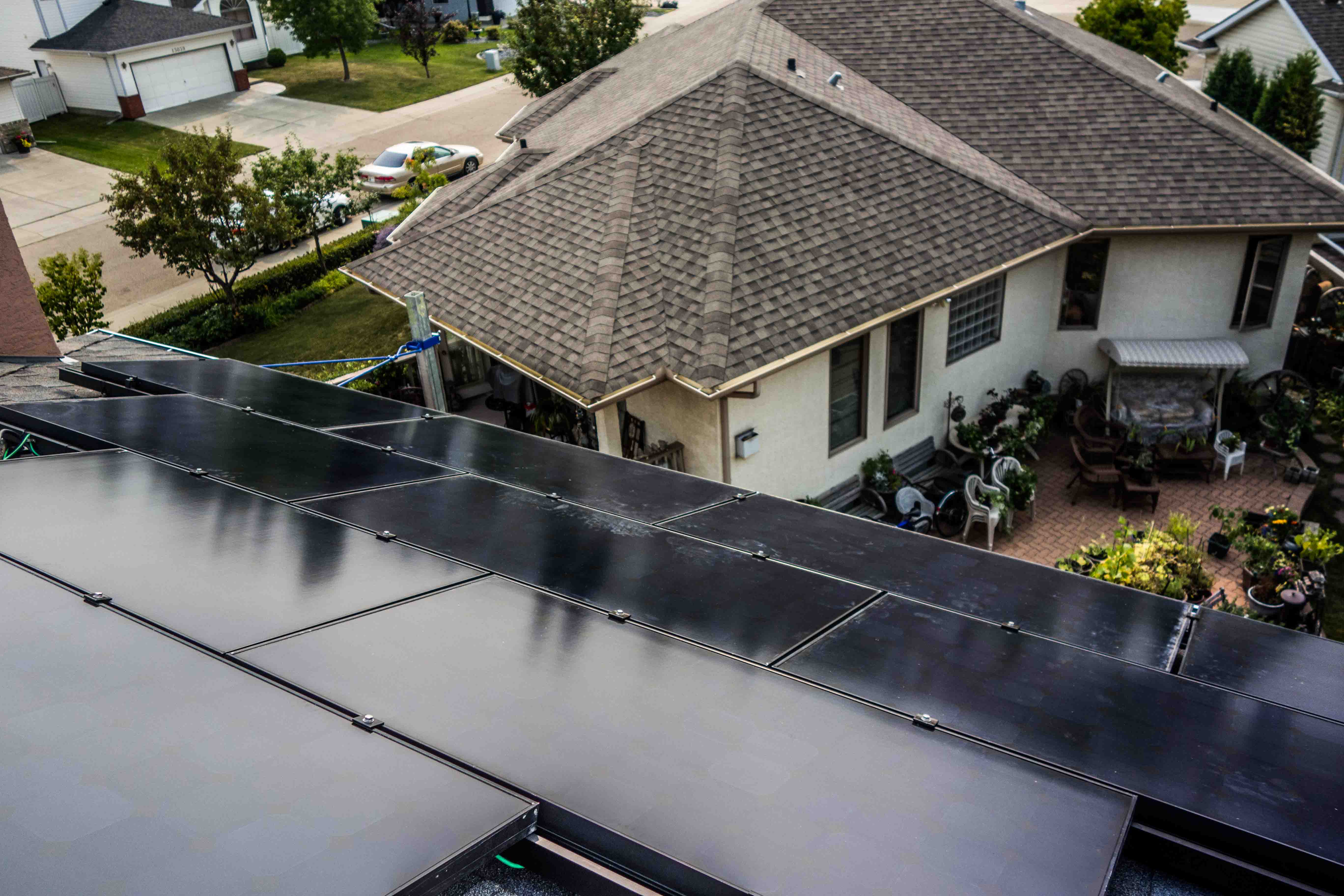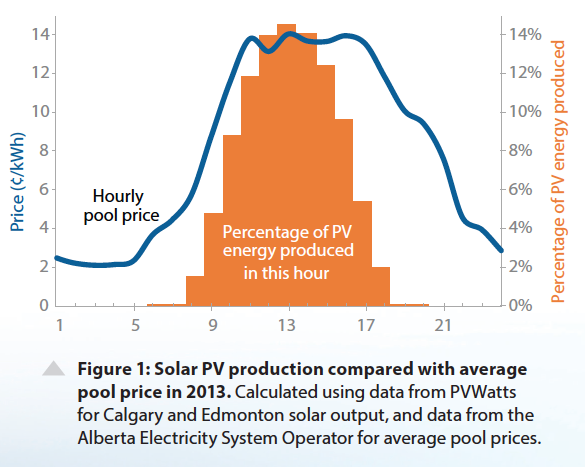
Progressive governments that are serious about renewable energy and climate change subsidize solar in order to make investments in it more rewarding. With oil prices threatening the province’s books there is no sense in asking for such incentives, but what if I told you that we can accelerate the adoption of solar power in our province without any cost to the taxpayer? Alberta has a world class solar potential but unfortunately solar micro-generators are not receiving fair market value for clean energy their systems supply to the electricity grid. Instead solar energy is traded at a discount and is effectively subsidizing electricity from coal and gas plants.
How is solar subsidizing the Alberta grid?
Solar power is already in exponential growth in Alberta. There are over 1,000 solar power systems connected to the electricity grid and almost half of them were installed in the past couple of years. Solar power was mainly sought by environmentally inclined customers but the motivation is shifting more towards economics. Without any rebate incentive solar power systems on a good roof in Alberta will generate energy at a lower rate than what utilities are charging, and will continue to become more rewarding as the cost difference between escalating cost of grid energy and transmission on the one hand, and declining cost of photovoltaic equipment and improvements in cell efficiencies on the other.
The simplest and most cost effective way to go solar is with a grid-tied system. This is a system that allows you to use solar power when it is available during the day and grid power when it isn’t. When there is no one home excess electricity that is not consumed is not stored in batteries to be used later; rather it is exported to the grid to be used by your neighbours’ appliances. The Alberta Micro-Generation Regulation mandated that micro-generators of renewable energy receive “fair market value” for their exported energy. What this has come to be understood was the monthly retail rate. So for example, if in January you were charged eight cents for every kilowatt-hour (kWh) of electrical energy consumed, your retailer will compensate you eight cents for every kWh exported to the grid. Sound fair? Actually, it’s not.
Electricity in Alberta’s deregulated energy market is traded on an hourly basis. Electricity pool prices peak with consumption which happens during the day, and at night it troughs when demand drops. Solar power’s generation pattern happens to compliment the electricity consumption/price pattern. It is available precisely when the price of electricity is at a premium. So isn’t it fair that solar micro-generators are compensated by a premium rate? That’s exactly what the Light Up Alberta program did. It was a program brilliantly designed to take advantage of our deregulated electricity market with several participating retailers across our province offering to purchase exported solar energy at 15 cents per kWh. The program was effectively terminated after complaints that it was a subsidy.

Solar Generation Pattern vs Hourly Poor Price retrieved from Pembina Institute
The Light Up Alberta program is (or was) the easiest way to accelerate the adoption of solar in our province. It is a voluntary feed-in-tariff program that – as opposed to Ontario’s very generous program – doesn’t involve millions of dollars in government spending. By trading at their respective pool prices solar micro-generators could be looking at retrieving the cost of their systems in 10 years less. The most promising thing about it as explained above is that this all possible with virtually no cost to the taxpayer. Retailers buy our energy at 15 cents per kWh which is what the market values it to be.
What is currently happening is that solar micro-generators sell their energy at a significant discount, which then goes over to their neighbours who are charged the same distribution and transmission rates when the energy they used just came from next door. So not only is solar making power cheaper for everybody, it is effectively subsidizing our electricity distribution and transmission systems as well. With natural gas prices being at historic lows, and with the government continuing to delay releasing its climate change framework it is time to strike when the iron is hot and demand the bare minimum, and compensate solar micro-generators fairly.
